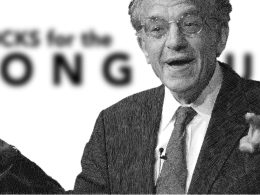Five years into the U.S. bull market this remains a “risk on” environment, but with monetary tightening on the horizon now is a time to become more cautious and start thinking about what comes next.
by Scott Minerd, Chief Investment Officer, Guggenheim Partners LLC
March 12 2014
Having enjoyed investing in a “risk on” environment for the past five years, it is important for us to be cognizant that the excessive margin of safety, which made it easy to buy U.S. stocks and bonds over the last few years, will not exist forever. Now, we must become more cautious. Famed investor and author Benjamin Graham described a good investment as one which “upon thorough analysis, promises safety of principal and a satisfactory return.” We should remember Graham’s wisdom as we invest for the future and hope to avoid the pitfalls of an overvalued market.
The reality is that U.S. securities are no longer fundamentally cheap and thorough due diligence is more important now than at any stage over the past few years. With the U.S. economy strong and monetary accommodation from the Federal Reserve set to continue for a while longer, we are clearly starting to pass into a realm of relative overvaluation. For example, last week spreads on CCC corporate bonds were 689 basis points over U.S. Treasuries. They could be headed back to the lows we saw in 2007 when they touched 500 basis points. After a very challenging winter where extreme weather dampened economic activity, pent-up consumer demand will likely spur a second quarter rebound in economic growth. This may push credit spreads even tighter. While I am not advocating an immediate change in direction or the sudden adoption of a more defensive investment approach, such a shift may be required as the economy gathers steam over the next 12-24 months. Now, we must guard against becoming complacent about the quality of investments we make and their inherent risks. What we buy today we own tomorrow and if we fail to prepare for every eventuality, then we should prepare to fail.
We are entering a new era where interest rates are inevitably heading higher over the long term. Before we get there, however, there may be one more dip in rates, and a Fed-hike-induced U.S. economic slowdown may provide the catalyst. Additionally, there is a ceiling on how high rates U.S. interest rates can rise in advance of the inevitable monetary tightening. Given that we are still sometime away from that event, I see the likely upper bound for the 10-year U.S. Treasury yield at 3.25 percent in the near term.
Chart of the Week
Ceiling for U.S. Interest Rates Until Fed Tightens
Some investors believe that with 10-Year U.S. Treasury yields at about 2.72 percent and with the Federal Reserve expected to start hiking the federal funds rate by 2016, interest rates could move significantly higher. This is because, historically, the maximum spread between 10-Year Treasury yields and the fed funds target rate is about 400 basis points. With the fed funds rate now at 0-25 basis points, that suggests yields could top 4 percent. However, accounting for the current position in the monetary policy cycle tells a different story. The median spread between 10-Year Treasuries and fed funds is about 150 basis points when monetary tightening is 12-18 months away. This suggests Treasury yields are unlikely to go much higher since they are already pushing historical limits for this relative point in time.
TIMING OF FED TIGHTENING AND SPREAD BETWEEN 10-YEAR U.S. TREASURY AND FED FUNDS RATE

Source: Haver, Bloomberg, Guggenheim Investments. Data as of 3/11/2014. Note: We use spread data from ten periods of the Federal Reserve beginning a sustained series of federal funds rate increases, since 1955.
Economic Data Releases
U.S. Labor Market Appears Solid despite the Temporary Freeze
- Non-farm payrolls were better than expected in February, adding 175,000 jobs. Gains were fairly well distributed across industries, and steady job growth occurred despite a high number of people unable to work during the survey week.
- Average hourly earnings rose a robust 0.4 percent in February, the best in eight months.
- Average weekly hours declined to 34.2, the lowest in over three years. The drop was due to cold and stormy weather conditions, which led to a near-record number of people not working a full week.
- The unemployment rate surprisingly ticked up to 6.7 percent from 6.6 percent, due to an increasing labor force and a weak household employment report.
- Job openings rose less than expected in January according to the Job Opening and Labor Turnover Survey. In a worrying sign, the level of both hirings and quits were lower than in December.
- Initial jobless claims dropped 26,000 to 323,000 for the week ended February 28th, the lowest level in three months.
- The NFIB Small Business Optimism Index dropped lower than expected in the February survey to 91.4, the lowest in nearly one year. Plans to hire and the business outlook recorded particularly large decreases.
- U.S. factory orders had a second consecutive month of decline in January, falling 0.7 percent.
Factory Output Falls in Euro Zone, China’s Exports Plunge
- Euro zone industrial production unexpectedly declined for a second consecutive month in January, down 0.2 percent. The decrease was led by a large drop in energy production.
- Germany’s exports rebounded 2.2 percent in January after falling the previous month.
- Industrial production in France decreased for a second consecutive month in January, down 0.2 percent.
- U.K. industrial production ticked up 0.1 percent in January, with another strong month of manufacturing output.
- Chinese exports plunged 18.1 percent in February, the largest drop since 2009. However, the decrease is difficult to interpret, due to the Chinese New Year and possible fake invoicing that previously inflated the trade data.
- China’s CPI slid further downward in February, reaching a 13-month low of 2.0 percent.
- Japan’s economy watchers survey was worse than expected in February, with an especially large drop in the outlook, which fell to the worst level since the 2011 tsunami, likely due to the looming tax increase.
Copyright © Guggenheim Partners LLC















